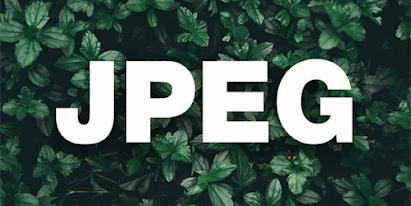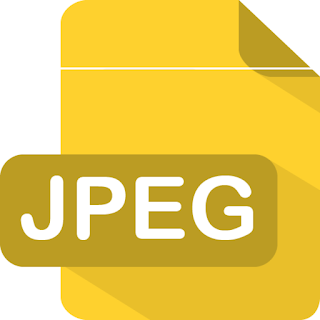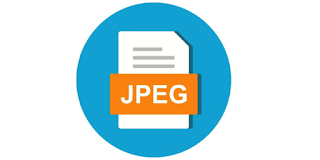What is a JPEG? To know What is a JPEG you first need to understand What is the full form of JPEG? Full form of JPEG — Joint Photographic Expert Group.

What is a JPEG?
What is a JPEG? An image's file size can be decreased by using the JPEG (Joint Photographic Expert Group) file format. "Optimized" refers to a decreased image file size for online display. It works well when compressing imagery with a constant tone or a camera. (Image file formats like GIF or PNG should be used for images with flat colors and where keeping a constant hue is critical.)
A method is used by the JPEG (Joint Photographic Expert Group) format to average the color values throughout a picture. The amount of instructions needed by the computer to reconstruct the image is reduced by averaging the color values; the fewer instructions needed, the lower the file size.
JPEG
JPEG (Joint Photographic Expert Group) is a popular lossy compression technique for digital pictures, notably those created by digital photography. The degree of compression may be modified, providing for a customizable balance between storage space and image quality. JPEG often reaches 10:1 compression with minimal discernible loss in image quality.
Since its debut in 1992, JPEG has been the most commonly used image compression standard in the world, as well as the most frequently used digital picture format, with several billion JPEG images created per day as of 2015.
The Joint Photographic Experts Group, which developed the standard in 1992, is referred to as "JPEG" informally. Nasir Ahmed initially devised the discrete cosine transform (DCT), which is the foundation of JPEG's lossy picture compression, in 1972. The Internet and later social media saw a huge increase in the use of digital pictures and images, mostly due to JPEG.
In several picture file formats, JPEG compression is employed. Along with JPEG/JFIF, JPEG/Exif is the most widely used image format for storing and transferring photographic pictures on the World Wide Web. It is utilized by digital cameras and other devices for photographing photos. Frequently, these many file variants are referred to as JPEG without any distinction.
Except for earlier versions of Internet Explorer, which offer an image/jpeg MIME type for uploading JPEG images, the MIME media type for JPEG is image/jpeg. JPEG files often end in.jpg or.jpeg in the filename extension. The greatest image size supported by JPEG/JFIF is 65,535 by 65,535 pixels or up to 4 gigapixels for a 1:1 aspect ratio. JPEG 2000 was a format created by the JPEG group in 2000 that was meant to be a replacement for the original JPEG, however, it was unable to achieve so.

JPEG Background
The original 1992 JPEG standard, which was recognized by both the CCITT (now ITU-T) and Joint Photographic Experts Group, implements techniques from a number of prior academic publications and patents. The discrete cosine transform (DCT), initially introduced as an image compression approach by Nasir Ahmed in 1972, serves as the primary foundation for JPEG's lossy compression algorithm. In 1973, Ahmed worked with K. R. Rao from the University of Texas at Arlington and T. Natarajan from Kansas State University to create a useful DCT algorithm.
Their 1974 study is mentioned in the JPEG standard, as are numerous other research publications on DCT, including a 1977 paper by Wen-Hsiung Chen, C.H. Smith, and S.C. Fralick that presented a fast DCT method, a 1978 paper by N.J. Narasinha and S.C. Fralick, and a 1984 paper by B.G. Lee.
The specification also mentions Wen-Hsiung Chen and W.K. Pratt's 1984 publication as an influence on its quantization method, and David A. Huffman's 1952 paper as an influence on its Huffman coding technique.
The specification also mentions Wen-Hsiung Chen and W.K. Pratt's 1984 publication as an influence on its quantization method, and David A. Huffman's 1952 paper as an influence on its Huffman coding technique.
JPEG format
The acronym "JPEG" stands for Joint Photographic Experts Group, which is the name of the body that developed the JPEG standard as well as other still image coding standards. ISO TC97 WG8 and CCITT SGVIII were represented by the term "Joint."
The group, which was founded in 1986, produced the JPEG standard in the late 1980s. They chose the discrete cosine transform (DCT) as the most efficient practical compression approach out of the numerous transform coding schemes they investigated. In 1992, the JPEG standard was established by the organization.
The group, which was founded in 1986, produced the JPEG standard in the late 1980s. They chose the discrete cosine transform (DCT) as the most efficient practical compression approach out of the numerous transform coding schemes they investigated. In 1992, the JPEG standard was established by the organization.
ISO TC 97 changed its name to ISO/IEC JTC1 in 1987, and CCITT became ITU-T in 1992. JPEG is one of two subgroups of the ISO/IEC Joint Technical Committee 1, Subcommittee 29, and Working Group 1 (ISO/IEC JTC 1/SC 29/WG 1), labeled Coding of Still Pictures, at the moment on the JTC1 side.
ITU-T SG16 is the relevant body from the ITU-T perspective. The initial JPEG group was established in 1986, and the first JPEG standard was published in 1992. It was accepted as ITU-T Recommendation T.81 in September 1992 and ISO/IEC 10918-1 in 1994.
ITU-T SG16 is the relevant body from the ITU-T perspective. The initial JPEG group was established in 1986, and the first JPEG standard was published in 1992. It was accepted as ITU-T Recommendation T.81 in September 1992 and ISO/IEC 10918-1 in 1994.
Although the file format used to store that stream is not specified by the JPEG standard, the codec that determines how an image is compressed into a stream of bytes and then decompressed back into an image is. The generally used file formats for the exchange of JPEG-compressed pictures are specified by the Exif and JFIF standards.

JPEG Patent controversy
Forgent Networks alleged in 2002 that it possessed and would enforce patent rights on JPEG technology deriving from a patent filed on October 27, 1986, and issued on October 6, 1987: U.S. Patent 4,698,672 by Wen-Hsiung Chen and Daniel J. Klenke of Compression Labs.
While Forgent did not own Compression Labs at the time, Chen eventually sold it to Forgent before joining Cisco. As a result, Forgent now owns the patent. Forgent's statement in 2002 sparked a backlash reminiscent of Unisys' efforts to establish its ownership of the GIF image compression standard.
While Forgent did not own Compression Labs at the time, Chen eventually sold it to Forgent before joining Cisco. As a result, Forgent now owns the patent. Forgent's statement in 2002 sparked a backlash reminiscent of Unisys' efforts to establish its ownership of the GIF image compression standard.
Following an investigation into the patent claims in 2002, the JPEG committee came to the conclusion that the previous art rendered the claims of the invention invalid. The invention relates to a lossy picture compression method known as the discrete cosine transform (DCT), which was first published in a 1974 work by Nasir Ahmed, T. Natarajan, and K. R. Rao. In a 1977 publication with C.H. Smith and S.C. Fralick, Wen-Hsiung Chen described a quick DCT algorithm as a further development of their DCT approach.
For its DCT method as well as a 1984 study by Chen and W.K. Pratt for its quantization technique, the 1992 JPEG standard acknowledges the 1974 Ahmed paper and the 1977 Chen paper.
The majority of what would subsequently be formulated in the previous literature had already been developed by the time Chen and Klenke had submitted their patent for a DCT-based picture compression technique in 1986. Chen allegedly served on one of the JPEG committees, according to JPEG spokesman Richard Clark, however, Forgent refuted this assertion.
The majority of what would subsequently be formulated in the previous literature had already been developed by the time Chen and Klenke had submitted their patent for a DCT-based picture compression technique in 1986. Chen allegedly served on one of the JPEG committees, according to JPEG spokesman Richard Clark, however, Forgent refuted this assertion.
By licensing their patent to roughly 30 firms between 2002 and 2004, Forgent was able to earn about US$105 million. To compel more licensing payments, Forgent sued 31 additional businesses in April 2004. Attempting to invalidate the patent, a group of 21 significant computer businesses filed a countersuit in July of the same year.
In April 2005, Microsoft also filed a different complaint against Forgent. In response to a request from the Public Patent Foundation in February 2006, the United States Patent and Trademark Office decided to review Forgent's JPEG patent.
In April 2005, Microsoft also filed a different complaint against Forgent. In response to a request from the Public Patent Foundation in February 2006, the United States Patent and Trademark Office decided to review Forgent's JPEG patent.
The USPTO declared the patent invalid on May 26, 2006, citing previous art. The USPTO also discovered that Forgent purposely delayed informing the Patent Office despite being aware of the previous art. This makes it extremely unlikely that any request to restore the patent would be granted.
Beginning in August 2007, a different business, Global Patent Holdings, LLC, asserted that the downloading of JPEG photographs from a website or by email violates their patent (U.S. Patent 5,253,341), which was issued in 1993. If this patent is not declared invalid, it may be applicable to any website that shows JPEG images.
The U.S. Invention and Trademark Office reexamined the patent from 2000 to 2007. In July 2007, the Patent Office cancelled all of the initial claims of the patent, but determined that a new claim presented by Global Patent Holdings (claim 17) was legitimate. On the basis of claim 17 of its invention, Global Patent Holdings subsequently brought many legal actions.
The additional prior art generated significant new issues about the invention's validity, according to the U.S. Patent and Trademark Office, which decided to reevaluate the '341 patent on March 5, 2008.
The alleged infringers in four of the five ongoing lawsuits have submitted requests to suspend (stay) their cases pending the outcome of the U.S. Patent and Trademark Office's evaluation of the '341 patent in light of the reexamination. The motions in the two lawsuits were approved by the court hearing over them on April 23, 2008, in Chicago, Illinois.
The claim was declared invalid on nineteen different grounds by the Patent Office in its first "Office Action" of the second reexamination, which was published on July 22, 2008. A Reexamination Certificate that invalidated all claims was granted on November 24, 2009.
The alleged infringers in four of the five ongoing lawsuits have submitted requests to suspend (stay) their cases pending the outcome of the U.S. Patent and Trademark Office's evaluation of the '341 patent in light of the reexamination. The motions in the two lawsuits were approved by the court hearing over them on April 23, 2008, in Chicago, Illinois.
The claim was declared invalid on nineteen different grounds by the Patent Office in its first "Office Action" of the second reexamination, which was published on July 22, 2008. A Reexamination Certificate that invalidated all claims was granted on November 24, 2009.
A corporation situated in Eastern Texas identified as Princeton Digital Image Corporation started suing many businesses for claimed infringement of U.S. Patent 4,813,056 in 2011, and the litigation has continued as of early 2013. Princeton has filed lawsuits against a sizable number of websites, merchants, camera and gadget makers, and resellers, alleging that the JPEG image compression standard violates the '056 patent.
General Electric was the original owner and assignee of the patent. The patent was no longer valid as of December 2007, but Princeton has nevertheless filed lawsuits against several businesses for "past infringement" of the invention.
(Under American patent law, a patent holder may file a case for "past infringement" up to six years prior to the actual filing of the complaint; hence, Princeton could have potentially kept suing businesses until December 2013).
More than 55 firms were the targets of lawsuits filed by Princeton in New York and Delaware as of March 2013. Although court documents show that General Electric transferred the invention to Princeton in 2009 and still holds certain rights in the patent, it is unknown whether General Electric is involved in the lawsuit.
(Under American patent law, a patent holder may file a case for "past infringement" up to six years prior to the actual filing of the complaint; hence, Princeton could have potentially kept suing businesses until December 2013).
More than 55 firms were the targets of lawsuits filed by Princeton in New York and Delaware as of March 2013. Although court documents show that General Electric transferred the invention to Princeton in 2009 and still holds certain rights in the patent, it is unknown whether General Electric is involved in the lawsuit.
JPEG Typical use
On images and paintings of realistic situations with subtle tone and color changes, the JPEG compression technique performs at its peak. The advantages of JPEG's compression make it popular for online usage, where using less data for a picture is crucial for a dynamic presentation. Digital cameras most frequently save images in the JPEG/Exif format.
Line drawings, other text-based images, and iconic visuals are not suitable for JPEG because the stark contrasts between neighboring pixels might produce observable distortions. The best way to store these photos is in a lossless graphics format, such as TIFF, GIF, PNG, or raw image format. There is a lossless coding mode in the JPEG standard, however, most products do not support it.
It is improper to utilize JPEG for accurate replication of imaging data since its typical application is a lossy compression technique that lowers the image fidelity.
JPEG is also not a good choice for images that will be subjected to several modifications since each time the picture is recompressed, some image quality is lost, particularly if the image is cropped, or displaced, or if encoding settings are altered - see digital generation loss for more information.
It is possible to save the first edit in a lossless format, edit it again in that format, and then publish it as a JPEG file for distribution to avoid losing picture information during sequential and recurrent editing.
It is possible to save the first edit in a lossless format, edit it again in that format, and then publish it as a JPEG file for distribution to avoid losing picture information during sequential and recurrent editing.

Post a Comment
Don't share any link